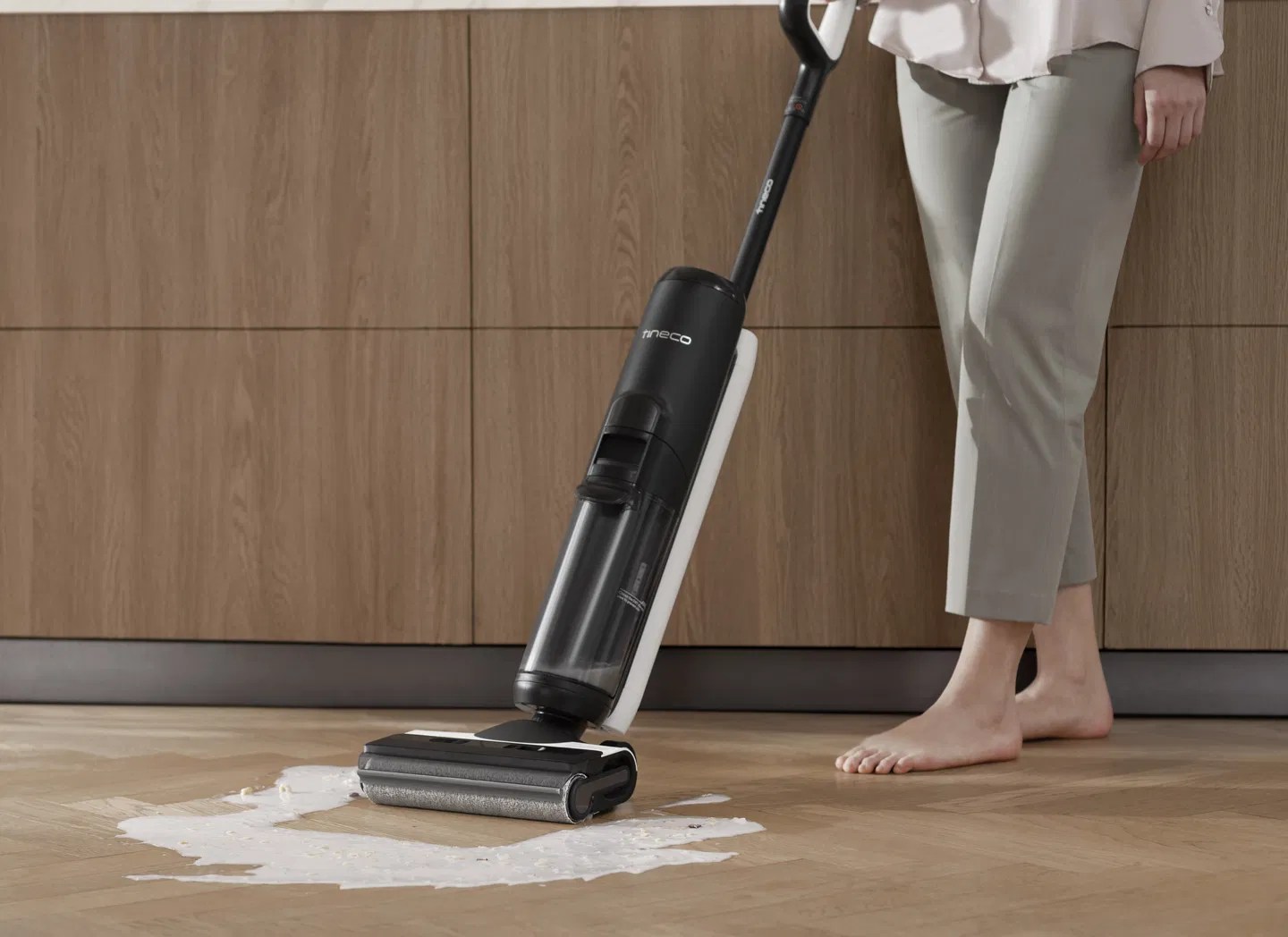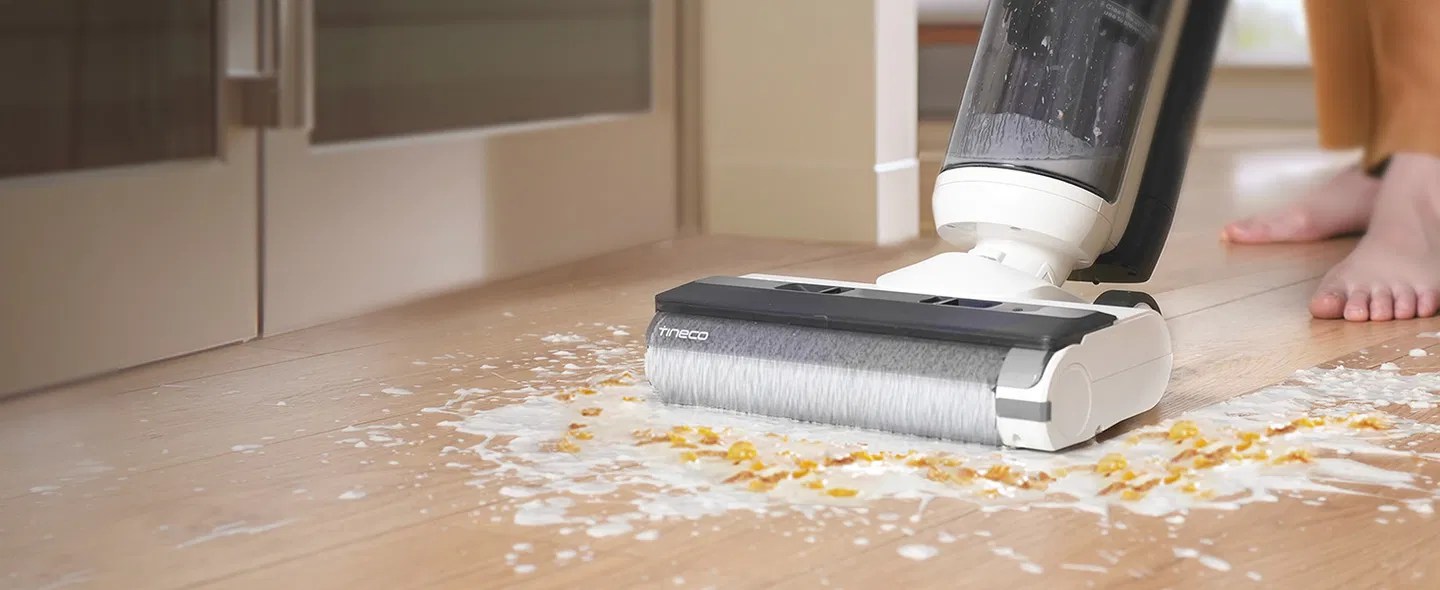Products featured are independently and objectively selected by our editors. From time to time, things you buy through our links may earn us an affiliate commission.
As they sound, mopping vacuums suck up dirt and also wipe clean floors, many times seamlessly with a sensor detecting which option is best for the situation. No lugging of a bucket of water. No back and forth of the mop. Mopping vacuums give you a hassle-free, time-saving cleaning of your floors.
One of the best quality and most affordably priced mopping vacuums on the market is the Tineco Floor One S7 FlashDry Smart Cordless Wet Dry Vacuum Cleaner, now 33% off. The original price is $1,299 and it’s now $869 on Amazon.
I had the pleasure of trialling it. I already had a mopping robot vacuum, so I didn’t think I’d need another handheld vacuum, but I was wrong. While the robot vacuum is great for roaming around cleaning while I’m working or even leaving the house, it doesn’t get into corners. Because of its circular shape, it cleans near a corner but, annoyingly, doesn’t get into it.
The Tineco vacuum, though, can get into any corner, plus it’s easy to use and hold. It has an LCD screen that shows its cleaning mode, remaining battery life, dirty monitoring loop and levels in the clean water tank.

It’s also easy to maneuver with its ergonomic handle and its voice prompts tell me exactly what it’s doing and how it’s feeling. Oh, and it has a headlight on the front of the roller brush that reveals debris I might not be able to spot with my naked eye on my floors.
I’m not one to read instructions — I just want to open a box, put the device’s parts together in a few steps and for it to start working. This was the case with the Tineco vacuum. I always use the vacuum in Auto mode and find it does the trick of cleaning well, though I’m sure you could experiment with using other modes, including Max, Ultra and Suction for even better cleaning.
I also really like the device’s self-cleaning feature — I put the vacuum on its base and hit the ‘self-clean’ button and the wheels will start spinning as it cleans itself. You can choose between quick self-cleaning, which takes two minutes, or super self-cleaning, which takes about six minutes.
The Tineco Floor One S7 FlashDry Smart Cordless Wet Dry Vacuum Cleaner also features FlashDry tech that uses fresh water heated by 70℃ hot air to dissolve stains and deep-clean the pipe and brush roller. Next, it dries, which extracts residual water. All this takes under five minutes. The brush roller rotates in both directions to make it fluffier and drier, while also reducing any smells.

The verdict? The Tineco Floor One S7 FlashDry Smart Cordless Wet Dry Vacuum Cleaner offers the best features of both of those devices. Like a good handheld vacuum, it’s easy to maneuver, get into corners and has a helpful LCD screen that shows you updates.
Like a good mopping robot vacuum, it eliminates the need for mopping (I don’t even own a mop anymore), wiping down my hardwood and tiled floors so they’re free of stains and spills. When you think of the 2-in-1 factor, plus how much hassle it saves, the price sounds bit more reasonable.
If it’s worth it for you, though, I’d say it depends on how much home floor surface you have to clean (the more, the more worth it this vacuum is), the type of floor surface you have (more hard floors make it more worth it) and how often your floors get dirty (the more often, the more worth it).
Related: 7 of the Most Efficient Robot Vacuums For More Time Back on Weekends
Related: Dyson Has Entered the Robot Vacuum Chat
Read more stories from The Latch and subscribe to our email newsletter.







